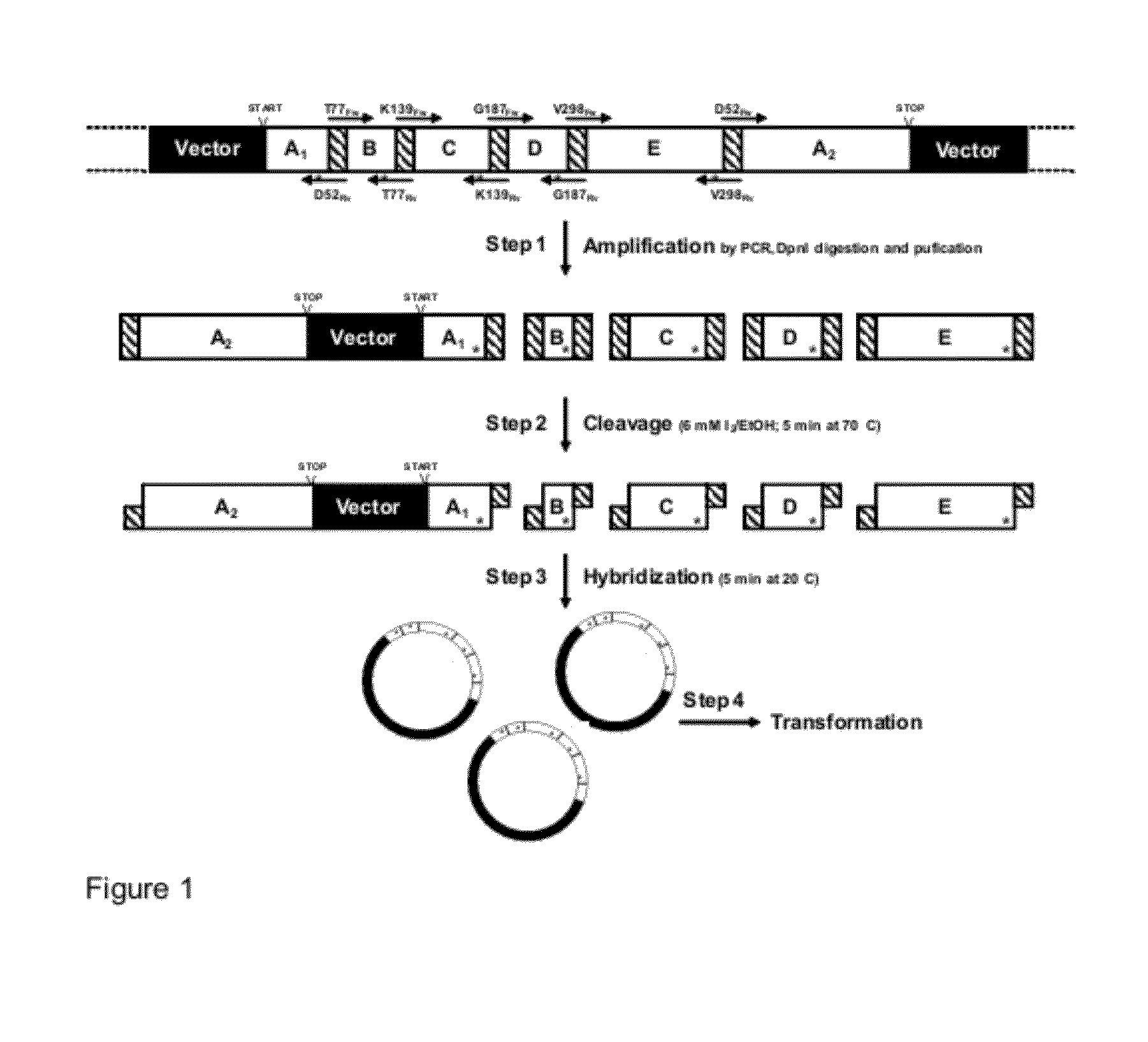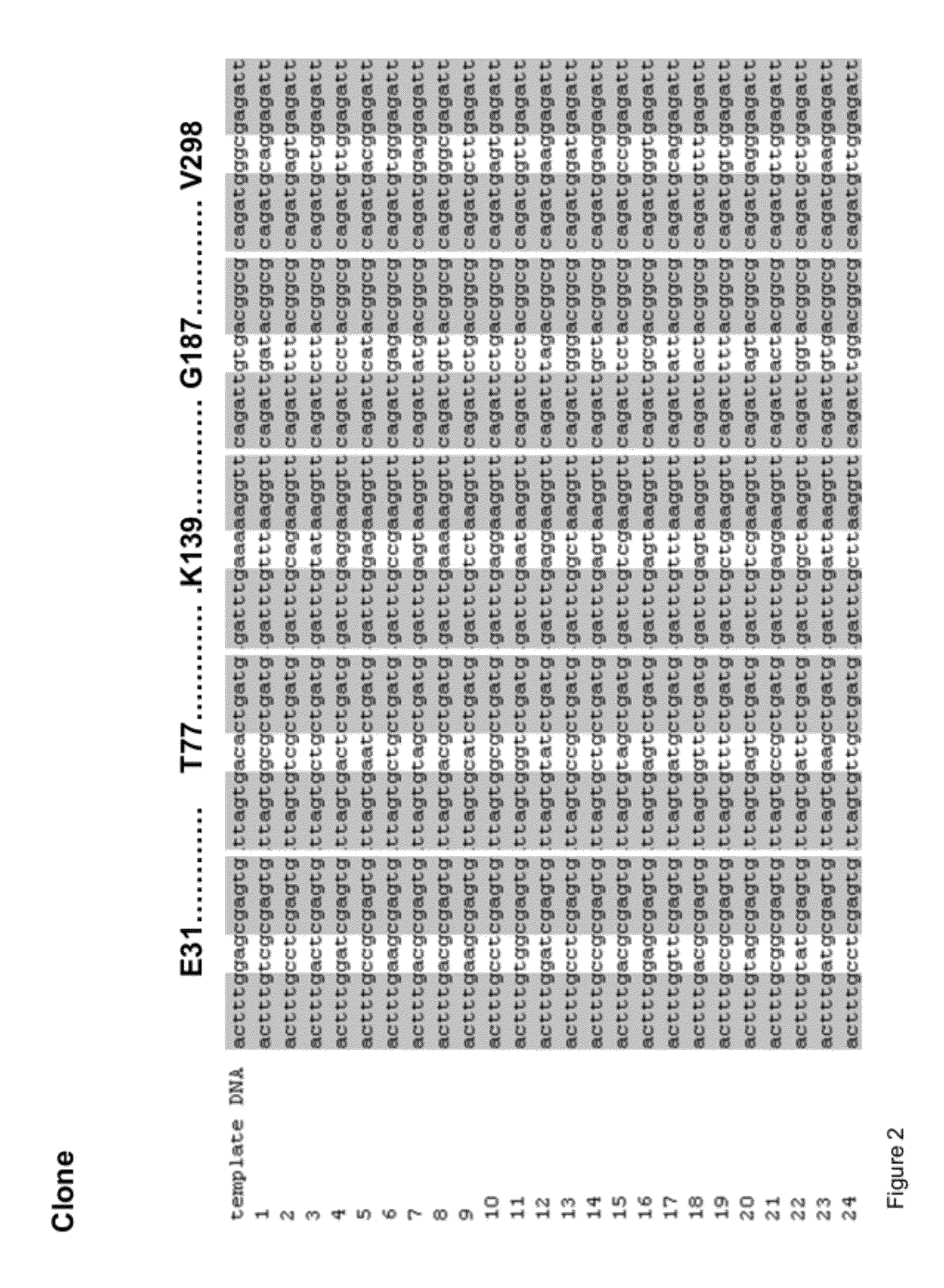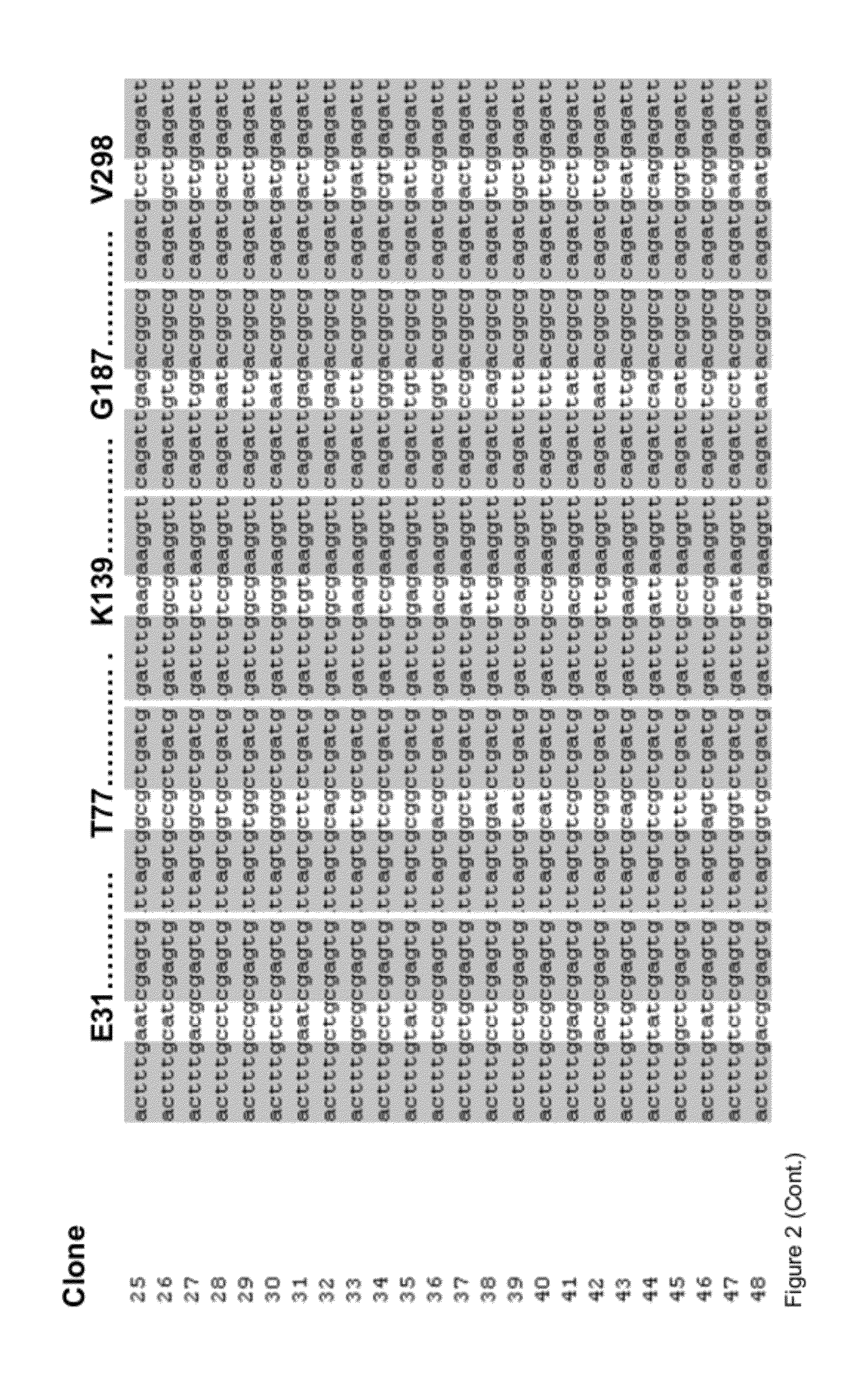Methods and Materials for Nucleic Acid Manipulation
a nucleic acid and manipulation technology, applied in the field of nucleic acid manipulation, can solve the problems low transformation efficiency of nicked nucleic acids, and general problem of needing to achieve a stable combination, and achieve the effect of high transformation efficiency
- Summary
- Abstract
- Description
- Claims
- Application Information
AI Technical Summary
Benefits of technology
Problems solved by technology
Method used
Image
Examples
example 1
“OmniChange” Sequence Independent Method for Simultaneous Site Saturation of Five Codons
Enzymes, Reagents and Oligonucleotides
[0108]All reagents used were of analytical grade and purchased from Sigma-Aldrich (Steinheim, Germany) and AppliChem (Darmstadt, Germany). Enzymes were obtained from New England Biolabs (Frankfurt, Germany), and dNTPs were purchased from Fermentas (St. Leon-Rot, Germany). Oligonucleotides were synthesized at HPLC-purity by Eurofins MWG Operon (Ebersberg, Germany) in salt-free form. According to suppliers recommendations all oligonucleotides were diluted in Milli-Q water to a final concentration of 100 μM. All oligonucleotides used in this study are summarized in FIG. 3.
Cell Strains and Vectors
[0109]The 1.3 kb phytase (phosphatase) gene from Yersinia mollaretii (81% sequence identity with phytase gene from Yersinia intermedia (BLAST); GenBank: DQ986462.1) was cloned and expressed in a pET-22b(+)-derived Novagen vector (Darmstadt, Germany) named pALXtreme-5b (2...
example 2
An Enzyme-Free and Sequence Independent Method for the Combinatorial Assembly of Multiple DNA Fragments
Enzymes, Reagents and Oligonucleotides
[0121]All chemicals were purchased from Sigma-Aldrich (Steinheim, Germany), Serva (Heidelberg, Germany) or AppliChem (Darmstadt, Germany) and were analytical grade unless stated otherwise. Enzymes and corresponding buffers were obtained from Fermentas (St. Leon-Rot, Germany) and all oligonucleotides were HPLC-purified and purchased from Eurofins MWG Operon (Ebersberg, Germany) in salt-free form. Oligonucleotides were diluted in Milli-Q water to a final concentration of 100 μM. All oligonucleotides used in this study are summarized in FIG. 7.
Strains, Genes and Vectors
[0122]The genes of the three phytases appA of Escherichia coli (GenBank: AF537219), phyY of Yersinia mollaretii (GeneBank: NZ_AALD02000002) and phyX of Hafnia sp. LU11047 (WO2011048046, SeqID 12) were ordered as synthetic genes (GENEART AG, Regensburg). The expression vector pET22b(...
PUM
| Property | Measurement | Unit |
|---|---|---|
| temperature | aaaaa | aaaaa |
| temperature | aaaaa | aaaaa |
| temperatures | aaaaa | aaaaa |
Abstract
Description
Claims
Application Information
 Login to View More
Login to View More - R&D
- Intellectual Property
- Life Sciences
- Materials
- Tech Scout
- Unparalleled Data Quality
- Higher Quality Content
- 60% Fewer Hallucinations
Browse by: Latest US Patents, China's latest patents, Technical Efficacy Thesaurus, Application Domain, Technology Topic, Popular Technical Reports.
© 2025 PatSnap. All rights reserved.Legal|Privacy policy|Modern Slavery Act Transparency Statement|Sitemap|About US| Contact US: help@patsnap.com



